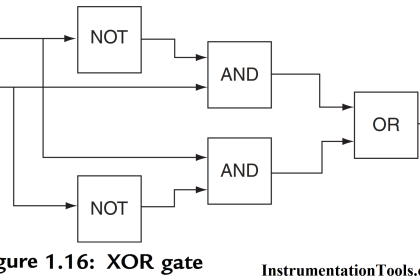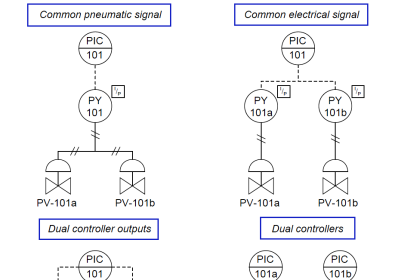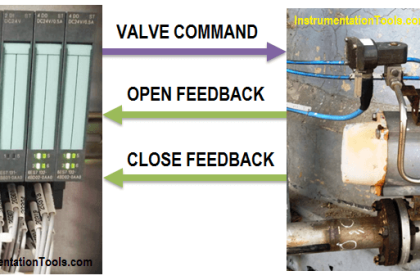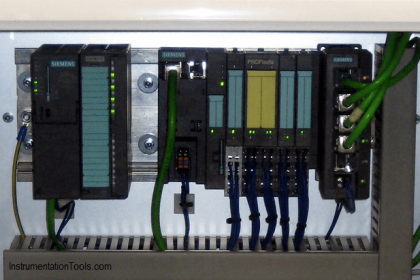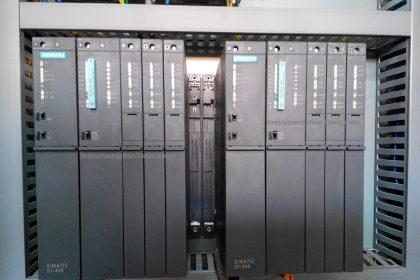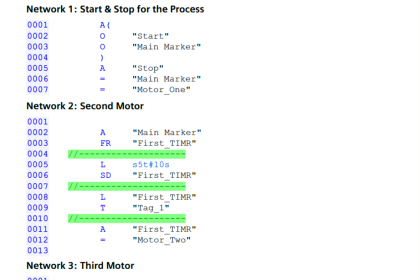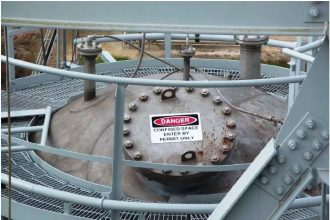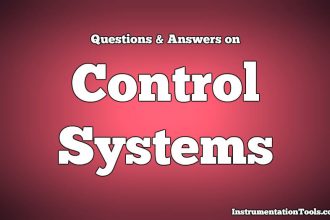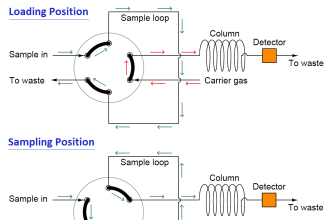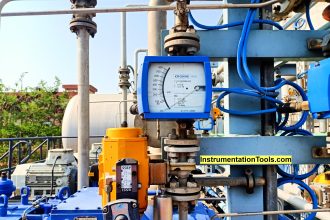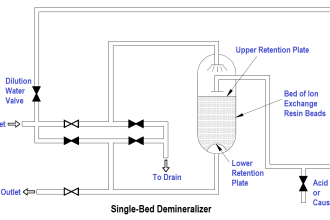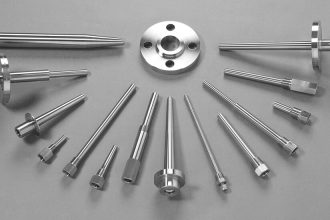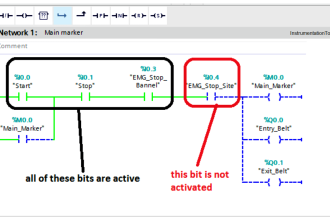In industrial applications, there are times when a single control valve will not be able to control a process parameter like temperature or flow. In such applications, precision and high resolution of the process parameter is a must.
But here, a single control valve will not be able to maintain such a requirement. So, there arises a need to use multiple control methods for a single process variable. In instrumentation, this method is called complementary split range control. In this post, we will see the concept of CSRC.
Complementary Split Range Control
The complementary split range control (CSRC) is a process where multiple control elements are employed and work in tandem to control a single process variable. The main thing to note here is that the control elements work in opposite directions with each other.
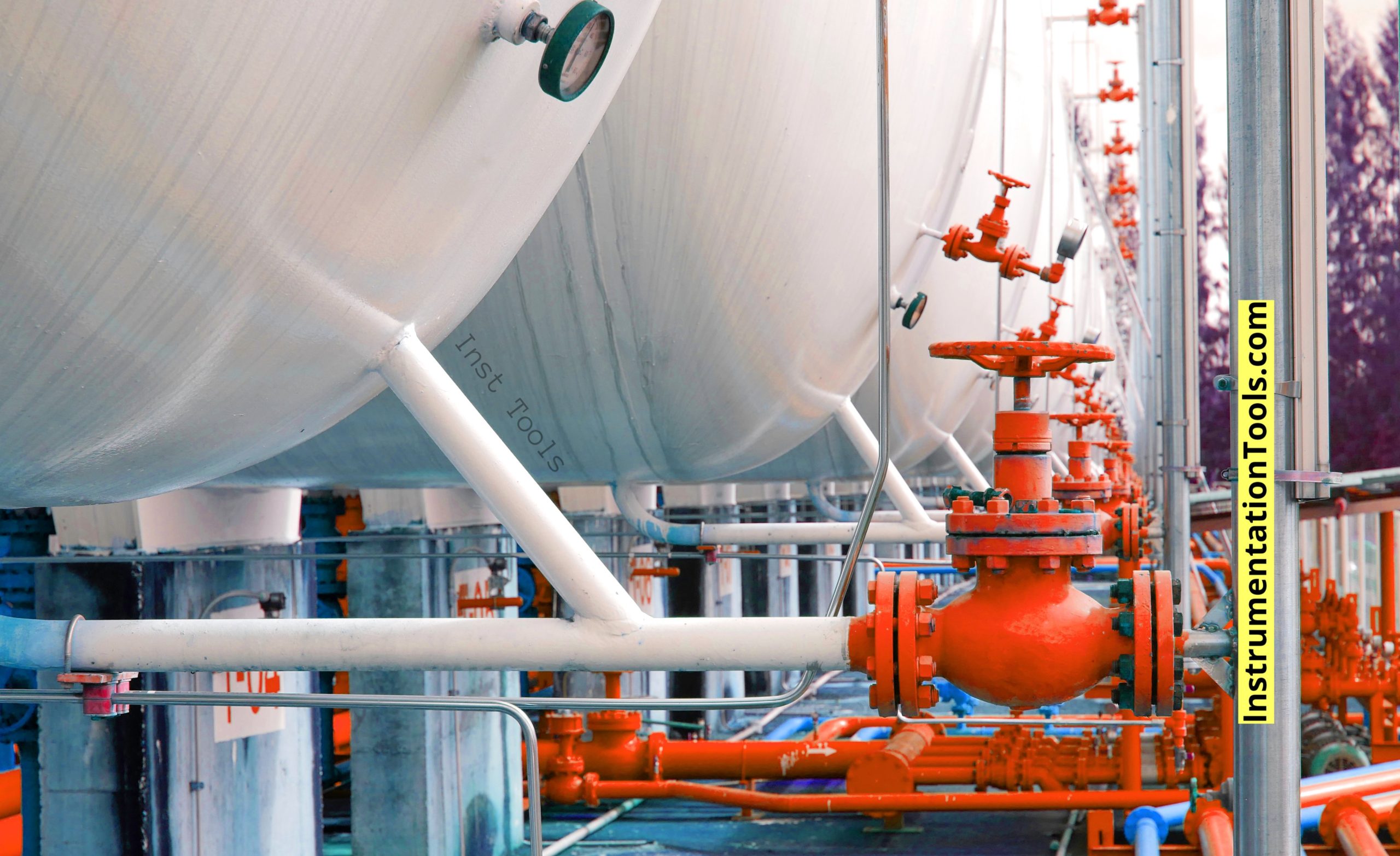
Suppose there are two valves in a system, designed to control a single flow meter. In this case, if one valve is fully open, then the other will remain fully closed. In a case where the valve is analog, if one valve is 25% open, then the other valve will be 75% open.
In this complementary manner, the valves will coordinate with each other and control the final process. What is the main advantage of this? If one valve is allowed to pass one type of media and the other valve the other media, then when one valve is closing, the other valve will open simultaneously. It means that a proportional flow of media will flow to the final process.
Due to this, a proper mixture of media will always be maintained in the process. If there was a single valve, then it would have taken time for the media to settle its parameter; because the valve would either open or close only. CSRC thus controls a process parameter accurately and with fine resolution.
CSRC Process
Consider a tank where a liquid is filled. The temperature of the liquid must be maintained accurately by the flow of hot and cold water. For both these types, two types of analog valves are used where one will pass hot water and the other valve will pass cold water. When one valve will open, the other valve will close, and vice-versa.
A PID controller will control both outputs inversely. At a desired cold setpoint, when one valve will start to open to pass cold water, the other valve will start to close to pass less hot water. Both the valves will be locked at a desired percentage to then pass an accurate amount of water mixture in the tank.
Similarly, at a desired hot setpoint, when one valve will start to open to pass hot water, the other valve will start to close to pass less cold water. As the setpoint is changed by the user, both the valves will work simultaneously and inversely to control the exact water temperature by maintaining proper water mixture flow.
Advantages of CSRC control
- As we saw, different types of media can be controlled in an inverse manner, which ensures a desired percentage of media presence, thus controlling the process parameter accurately.
- As the control elements work in a balanced way and avoid any full opening or closing at their best, the safety levels are high in this control. Due to this, the process can run smoothly without any safety hazards.
- With the multiple control elements, you can diversify your product by bringing in variations. And because these variations are under safe operation, business output too increases.
- Because the control elements are operating in inverse conditions, sudden jerks, mechanical imbalances, and process imbalances are reduced to a great extent.
- You can use CSRC control for redundancy too. This means if there are two valves, only one valve will operate at a time. The other valve will switch over in case of failure of the first valve.
In this way, we saw the concept of complementary split range control.
Read Next:
- What is a Split Range Control Loop?
- Types of SCADA System Architecture
- SCADA and PLC Configuration Systems
- Control Valve Sequence Methods
- Split Range Control using Ladder Logic
